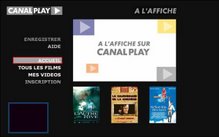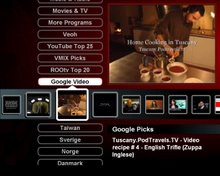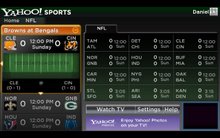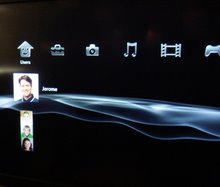The Issue: Internet video browsing and viewing at the TV is particularly useful for those trying to access video from outside their geographical location.
Solutions: Several start-ups and established media companies around the world are distributing Internet video feeds viewable on the PC. Some also offer TV-web formatted video, while almost all offer RSS feeds, which can easily be accessed via a TV-web page. This makes it possible to reach a living room TV audience with vast amounts of Internet video, or reach any TV around the home for that matter.
Behind the scene: Active-TV technology enables low-cost internet video browsing at the TV. With active-TV technology built into the TV, or integrated into a set-top conversion boxes, it is possible to access video channels from around the world.
Some developers have used the Windows Media Center (WMC) SDK during TV-website construction. The WMC SDK extends the familiar website development software with the addition of the MediaCenter Object. The methods or procedures supported by the MediaCenter Object provide controls for playing media on a networked TV. The PC’s browser uses the extensions provided by the MediaCenter Object to correctly process TV-websites features which do not appear in PC-websites. Microsoft initially supplied the MediaCenter Object with the MCE PC. Media Mall provides an alternative yet compatible MediaCenter Object, which can be used with Windows XP or any Extended-PC using a recent version of Windows.
Below is an image of a TV-website from the BBC. The TV-website software makes use of the MediaCenter Object. The BBC site can be accessed by any active-TV technology enabled TV or STB, such as the D-Link DSM-520, via use of the Media Mall-supplied extensions to the supporting PC’s browser.
Solutions: Several start-ups and established media companies around the world are distributing Internet video feeds viewable on the PC. Some also offer TV-web formatted video, while almost all offer RSS feeds, which can easily be accessed via a TV-web page. This makes it possible to reach a living room TV audience with vast amounts of Internet video, or reach any TV around the home for that matter.
Behind the scene: Active-TV technology enables low-cost internet video browsing at the TV. With active-TV technology built into the TV, or integrated into a set-top conversion boxes, it is possible to access video channels from around the world.
Some developers have used the Windows Media Center (WMC) SDK during TV-website construction. The WMC SDK extends the familiar website development software with the addition of the MediaCenter Object. The methods or procedures supported by the MediaCenter Object provide controls for playing media on a networked TV. The PC’s browser uses the extensions provided by the MediaCenter Object to correctly process TV-websites features which do not appear in PC-websites. Microsoft initially supplied the MediaCenter Object with the MCE PC. Media Mall provides an alternative yet compatible MediaCenter Object, which can be used with Windows XP or any Extended-PC using a recent version of Windows.
Below is an image of a TV-website from the BBC. The TV-website software makes use of the MediaCenter Object. The BBC site can be accessed by any active-TV technology enabled TV or STB, such as the D-Link DSM-520, via use of the Media Mall-supplied extensions to the supporting PC’s browser.

Using a different approach, a great many internet-video broadcasters are making use of RSS to distribute their video. There is growing demand for reaching a networked TV audience around the home via RSS distribution. This demand is partly satisfied by tools such a TVersity. But there is also interest in a quick way of ‘converting’ RSS feeds to a TV-web page which already contains the necessary MediaCenter Object support. The active-TV technology blogspot has been providing template code for accomplishing this.
The French language site WAT (avec TF1 networks) has a range of interesting videos grouped into themes. Members can produce their own playlists, but unfortunately (unlike YouTube) there is no RSS feed for playlists. The TV-web version of WAT along with other TV-web channels are available for download. Below is a 4x3 TV image of the WAT channel.

BBC News also produces a generic RSS video feed. Below is a 16x9 image of the TV-web channel providing access to the BBC News feeds. The BBC channel and the WAT channel are accessible on any TV.

The examples above are merely demonstrations of what is already possible. Browsing TV-web format sites, or channels, from the TV is just ‘taking off’. Active-TV technology is just one method being developed to accomplishing this; but it is in operation now, is based on open standards, and has little impact on TV cost or stability.
Feedback, corrections and comments welcome. Contact me for more information or support with active-TV technology development.
Daniel Mann












